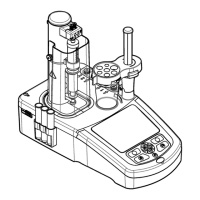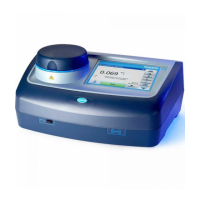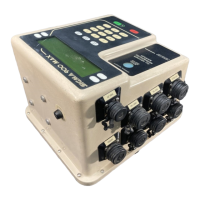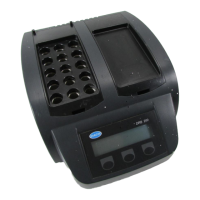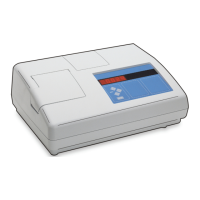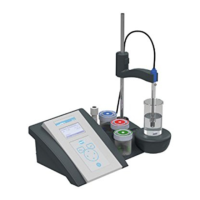AutoCAT 9000 Validation Study
AutoCAT 9000 Validation Study
50081_AutoCAT 9000 Validation Study.fm Page 165
electrode is clean, but also that the reference electrode has sufficient electrolyte, and that
the reference junction is not fouled. In titrators that employ dual platinum pins, without a
reference electrode (a biamperometric system), there is no reference electrode to
maintain. The instrument tested utilizes the biamperometric system, and the polarity of
the potential is reversed with each subsequent titration, to automatically strip any anodic
or cathodic electrochemical depositions. Additionally, the instrument has a built-in
electrode cleaning method, which should be performed periodically, to assure optimum
performance.
Proper storage and standardization of titrants is an important consideration. Phenylarsine
oxide (PAO) is very stable, with a shelf life of over 1 year. This titrant can be
standardized when used, or the certificate of analysis can be obtained for the titrant lot in
use. When performing back titration, per Standard Method 4500 Cl C, 28.2 mN iodine
titrant is used. This titrant is much less stable than PAO, and thus titrant standardizations
with sodium arsenite or PAO should be conducted more frequently.
Manually added sample conditioning reagents, potassium iodide (KI), acetate pH 4
buffer, and phosphate pH 7 buffer, should also be of known purity. The pH 7 phosphate
buffer, used for free chlorine determinations, is a growth medium for micro-organisms:
these microbes have chlorine demand, and thus can result in false negative values, errors
that can be significant during low µg/L chlorine determinations. A formulated powder of
the pH 7 buffer, available in single unit-doses for the 200 mL sample, is a preferred
alternative for low-level measurements. When KI solutions are used instead of the direct
addition of KI powder, care must be taken to prevent conversion of the KI in solution to
iodine, otherwise false positive results can be obtained, which again can be significant
sources of error in low µg/L determinations. Factors that catalyze conversion of KI to
iodine include sunlight, iron present as a colorant in amber glass bottles, and the possible
uptake of chlorine from the atmosphere in areas where high concentrations of chlorine
are found. The pH 4 acetate buffer does not promote microbial contamination, and is
very stable.
Familiarization of operators with the instrument is essential for accurate and
reproducible chlorine measurements. Even though guided through the proper method
sequence, there are instrument settings that are appropriate for optimization of the
instrument for chlorine measurement at specific points of process. Whenever possible,
senior operators, or laboratory analytical staff with experience in instrumental
quantitative analysis, should work to reduce instrument operation to easily followed
Standard Operating Procedures (SOPs), which can then be located at the measurement
station. Consultations with the manufacturer's technical support staff may be required to
fully integrate the autotitrator into the daily operator routine.
Conducting MDL and Proficiency Trials
When conducting internal MDL and operator proficiency trials, it is extremely important
that proper sample preparation procedures and analytical controls are in place: without
proper analytical procedures, there is a high probability that the variability of sample
standard preparation will be determined, instead of a determination of the method
detection limit, or staff proficiency in running the instrument.
Preparation of standards in the low end of the part per billion range is non-trivial: one
part per billion is equivalent to one penny in ten million dollars; one foot in a journey to
the moon; one second, in thirty two years. The preparation of these standards is even
more difficult for chlorine, which is highly reactive, and quite volatile. Through proper
training however, scrupulous attention to detail, appropriate volumetric ware and

